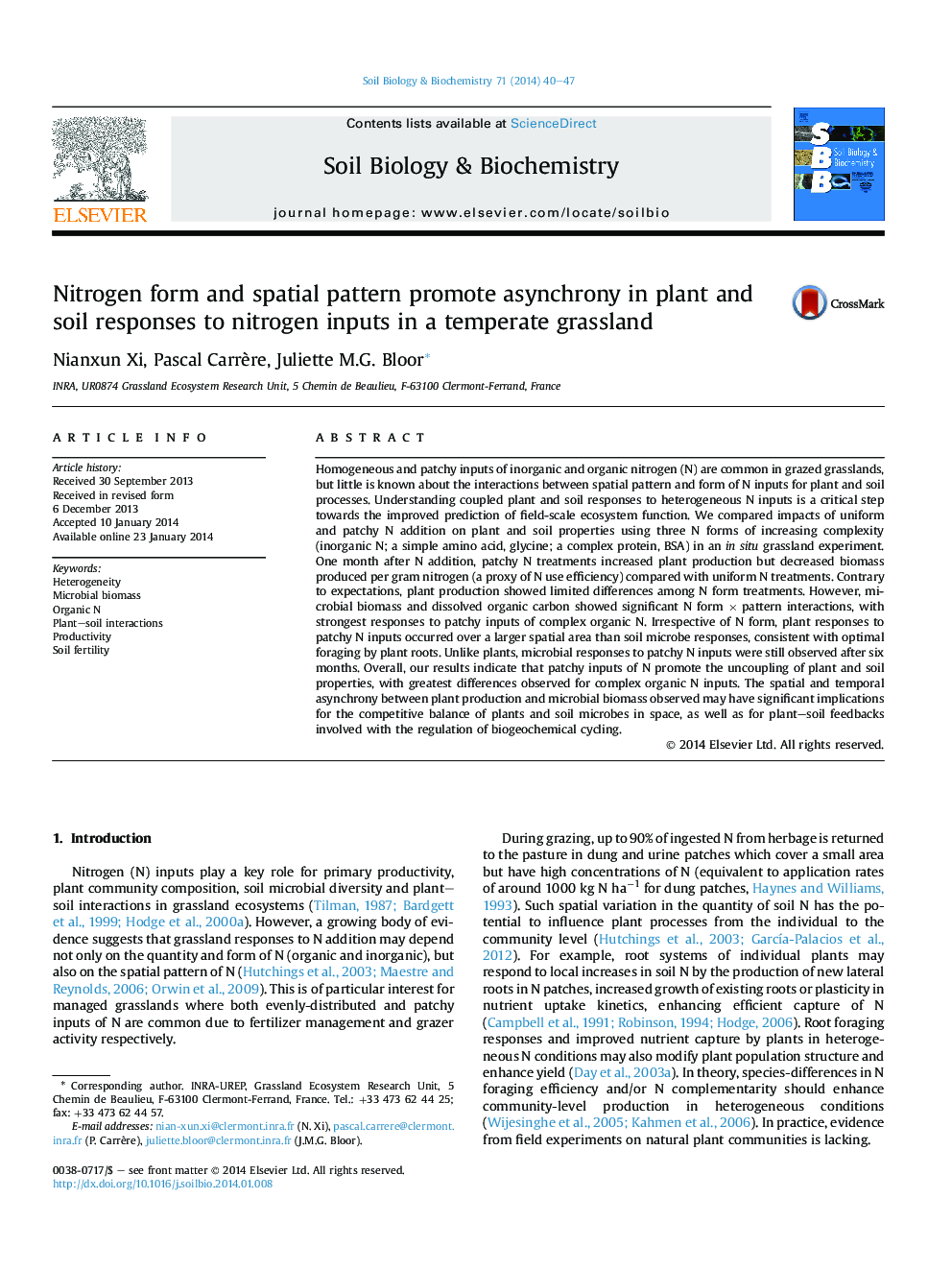| Article ID | Journal | Published Year | Pages | File Type |
|---|---|---|---|---|
| 8364848 | Soil Biology and Biochemistry | 2014 | 8 Pages |
Abstract
Homogeneous and patchy inputs of inorganic and organic nitrogen (N) are common in grazed grasslands, but little is known about the interactions between spatial pattern and form of N inputs for plant and soil processes. Understanding coupled plant and soil responses to heterogeneous N inputs is a critical step towards the improved prediction of field-scale ecosystem function. We compared impacts of uniform and patchy N addition on plant and soil properties using three N forms of increasing complexity (inorganic N; a simple amino acid, glycine; a complex protein, BSA) in an in situ grassland experiment. One month after N addition, patchy N treatments increased plant production but decreased biomass produced per gram nitrogen (a proxy of N use efficiency) compared with uniform N treatments. Contrary to expectations, plant production showed limited differences among N form treatments. However, microbial biomass and dissolved organic carbon showed significant N form Ã pattern interactions, with strongest responses to patchy inputs of complex organic N. Irrespective of N form, plant responses to patchy N inputs occurred over a larger spatial area than soil microbe responses, consistent with optimal foraging by plant roots. Unlike plants, microbial responses to patchy N inputs were still observed after six months. Overall, our results indicate that patchy inputs of N promote the uncoupling of plant and soil properties, with greatest differences observed for complex organic N inputs. The spatial and temporal asynchrony between plant production and microbial biomass observed may have significant implications for the competitive balance of plants and soil microbes in space, as well as for plant-soil feedbacks involved with the regulation of biogeochemical cycling.
Related Topics
Life Sciences
Agricultural and Biological Sciences
Soil Science
Authors
Nianxun Xi, Pascal Carrère, Juliette M.G. Bloor,
